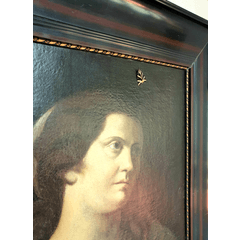Using Blending Modes
Introduction
Welcome to my tutorial!
If you are looking to give your artwork an edge by using blending modes, you've come to the right place.
In this post I will explain how to use Blending Modes, some of the Effects you can apply, and the extent and explanations of their uses.
Making An Illustration
To use Blending Modes effectively it is good to have an image to work on top of first.
Seen above is a basic illustration featuring majority flat colors all around a similar level of light, which usually is referred to as value.
Blending Modes can be greatly with full value pieces, but starting with flats is a good introduction.
Where to Find Blending Modes
On your interface, you should have a section for your layers. Above the layers is a selection of icons, with the icon you are looking for being a rectangle that will say Normal.
Depending on what Blending Mode you have active on the current layer, the word will be different as seen above.
How Blending Modes Work
Blending Modes affect the different Values of the work below, and depending on what Values a certain mode has changes the result.
For example with the illustration above, we are creating a shadow on the lower jaw of the character with the Multiply Mode.
Multiply only affects colors are that are dark, and anything that is pure white will turn invisible when activated. So, when you use it as a soft shadow it turns solid where it is dark and transparent where there is either no color at all or white.
For the illustration above I also turned down the Transparency to allow the illustration to come through.
Multiply
As said above, Multiply works like a shadow when applied.
If you want to have elements not be affected by the Blending Mode, you can erase elements on that Layer to effect the result.
In the illustration above, I erased the Gradient of shadow on the eyes and nose to allow for different elements to be applied later.
Glow
Glow works as it is described.
When used above an illustration it will make the elements glow brightly in the result, and depending on how much is applied it will effect how bright the glow appears.
In the illustration above, I applied the Glow Blending Mode to the eyes of the character using a flat red brush. This results in the eyes looking like they are glowing through a darkness.
Depending on the color you choose, that is how it will be represented on the piece.
For example, the rim lighting of the piece uses white while the eyes use a red.
Overlay
Overlay will enhance the values of the image below.
Dark colors will appear darker and more vivid while lighter colors will become brighter and more vivid.
In the illustration above, it is used to increase the value of the shadow on the character's face.
Overlay can also be used as a means to colorize an image in a specific hue.
In the illustration above, we have a red color that is using the Overlay Blending Mode at around a 25% Transparency.
The result creates a red hue over the character that brings all the elements together in a cohesive way.
In this illustration, the OverlayBlending Mode was applied to the color red over a black and white Gradient
It darkens the darks and lightens the lights, while also enhancing the reds.
Other Uses for Blending Modes
Blending Modes can also be applied to Gradient Maps!
Depending on the mode used it will pull the information from the Gradient Map and apply it to the piece in an interesting way.
In the Illustration above we can see that when applied using the Hard Light Blending Mode we get a much darker illustration that also changes the overall hue of the piece.
Gradient Maps are great tools for coloring grayscale images or bringing an illustration's elements together under a similar range of hues.
Conclusion
I hope this post helped you figure out the world of Blending Modes, at least a little.
Remember to explore and experiment with all the modes to get the best results!
Take care fellow Artists!
























コメント